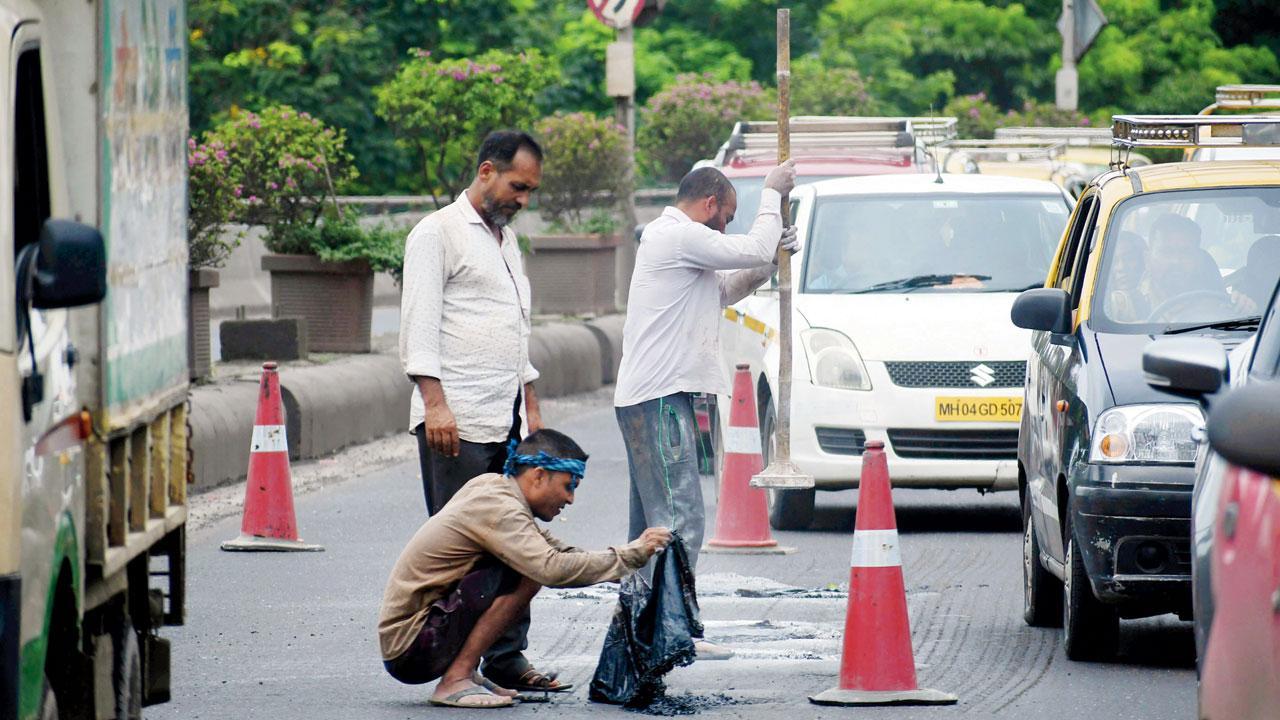Officials feel two-wheelers far better than four-wheelers for a real feel of the roads, will help better address the road situation before the monsoon

Workers filling potholes on Parel-Byculla flyover. File Pic/Ashish Raje
The BMC has asked its engineers to supervise roads on bikes and not in four-wheelers. Senior officials feel that it is the best way to get a feel of the situation—not just the potholes but the entire road stretch so that problems can be corrected before the monsoon or before the potholes issue manifests.
ADVERTISEMENT
Even though the BMC started the procedure to convert all asphalt roads into cement concrete, barely 25 per cent of the work has been completed. As the monsoon arrival is getting near, the BMC top officials told their engineers to review roads, whether above or below 9 metres, and do the patchwork or resurfacing whenever needed.
“I asked them to be on the field every day and take a ride on a bike and not on four-wheelers. The first thing is that four-wheelers avoid potholes and bumpy roads more easily and on bikes you can get a better idea of roads. An entire stretch is visible by bike and we can take appropriate action,” said Abhijeet Bangar, additional commissioner of the BMC.
He added, “I believe there is no chance to develop a one-metre pothole in a single night. On the first day, a pothole is not more than six inches and if it fills up on that same day, it won't create a bigger pothole later. So surveillance and early action is the key.”
“There are multiple ways to register a pothole complaint to the BMC-on a helpline number, WhatsApp, pothole apps, or on social media like ‘X’. “There are 15 steps to register a complaint name, phone, email, ward, location etc. The system should be simple so that people won’t get annoyed with it. So we are trying to cut the steps down to five so that more people can use it,” said a senior official of the BMC.
25
Percentage of road concreting work completed
 Subscribe today by clicking the link and stay updated with the latest news!" Click here!
Subscribe today by clicking the link and stay updated with the latest news!" Click here!







